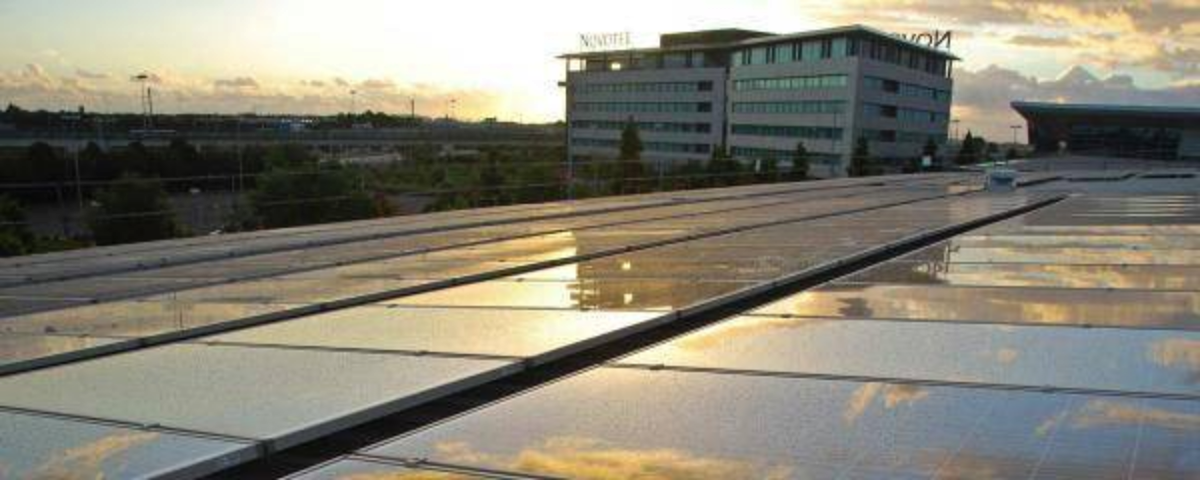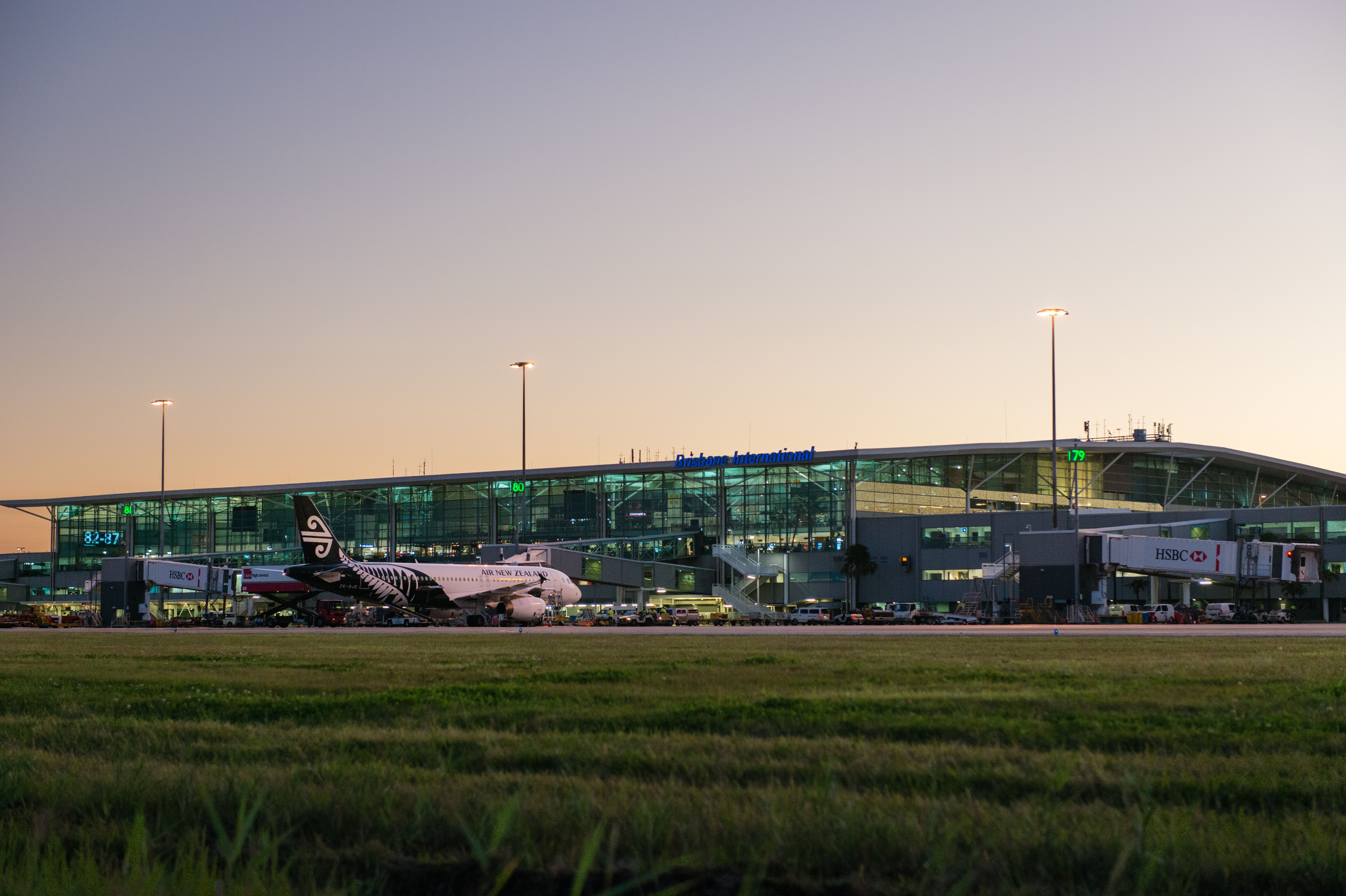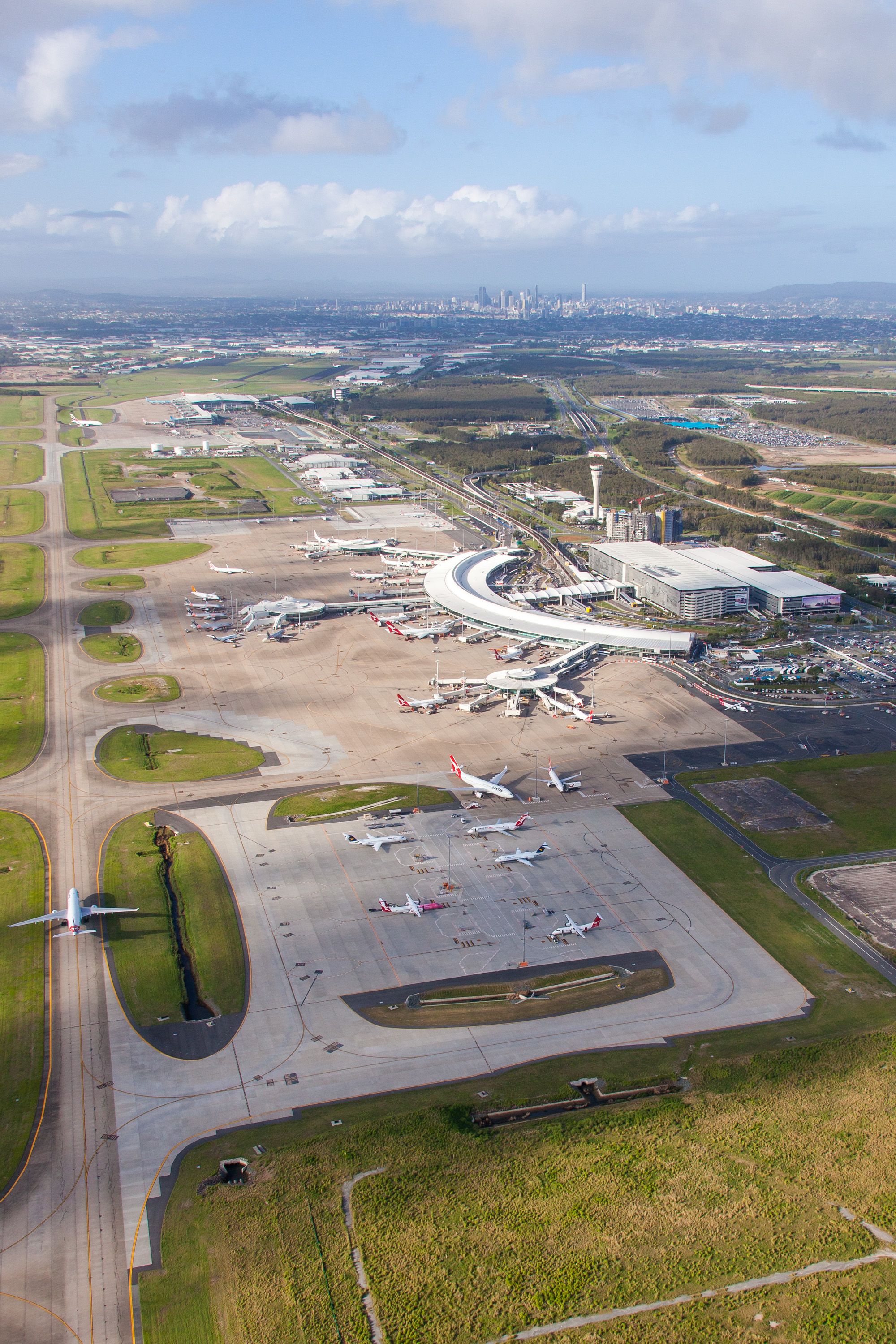Brisbane Airport is bringing forward its net-zero target by 25 years. The busy Queensland airport had targeted a 2050 net-zero target date in line with many other aviation industry organizations. But on Friday, the airport said it would dramatically accelerate its emission reduction targets and commit to net-zero by 2025.
Brisbane Airports targets net-zero emissions by 2025
Specifically, the accelerated 2025 net-zero targets tackle direct emissions from operational activities and indirect emissions resulting from consumed products such as purchased electricity. "Brisbane Airport Corporation has committed to transition to 100% renewable energy, purchase all-electric fleet vehicles, and develop an onsite carbon removal project within its biodiversity zone," says an airport statement.
By the end of the decade, Brisbane Airport wants to value add to its net-zero emissions by sending zero waste to landfill, using at least 10% sustainable aviation fuel, and making sure 50% of water consumed comes from recycled sources.
"This is not a new concept for us. We've been on this journey for 12 years, but now we are hitting fast-forward to reduce our impact on the planet," said Brisbane Airport Chief Executive Officer Gert-Jan de Graaff.
Discover more aviation news here.
Concrete steps to reduce carbon emissions at Brisbane Airport
Back in 2010, Brisbane Airport set aside over 10% of its landmass to establish a 285-hectare biodiversity zone. These days, European honeybee hives on that site produce honey that gets on-sold locally. The biodiversity zone also acts as a local carbon removal asset. More recently, the old diesel airport buses were ditched in favor of electric buses. Brisbane Airport now has Australia's largest electric fleet bus. The fleet replacement program cut carbon emissions by 250 tonnes annually. In 2019, the airport also installed over 18,000 solar panels with a 6MW generating capacity.
"We want passengers to know that when they're traveling through Brisbane Airport, we are doing everything possible to ensure they have the lightest touch on planet earth possible," said Mr de Graff.
 An airport's environmental footprint is more than its carbon emissions
An airport's environmental footprint is more than its carbon emissions
But as the airport notes, while they can target net-zero emissions from their own operations, they cannot necessarily control the emissions from airport customers, including airlines. There is nothing net-zero about an Airbus A380-800 spewing emissions into the atmosphere as it powers out over Moreton Bay.
Over two dozen airlines fly in and out of Brisbane Airport using a variety of planes. Some of those planes, such as Fiji Airways' MAX 8, Singapore Airlines' A350s, and the Qantas Dreamliners, leave a relatively light environmental footprint in their wake. Others, such as the Emirates A380s, Air Niugini's ancient 767-300s, and the 737-800s that make up the bulk of Australia's domestic airline fleet, aren't so environmentally blue chip.
"Brisbane Airport Corporation acknowledges that its responsibilities extend beyond its own operations," says the airport's statement. "Brisbane Airport Corporation has committed to working with more than 100 other airports, airlines, fuel suppliers, and industry stakeholders to put the global aviation sector on the path to net-zero emissions."
Net-zero is an admirable goal, and Brisbane Airport's 2025 net-zero is a highly ambitious goal. But an airport's environmental impact is far more than its carbon emissions. Negating the environmental impact of any large airport is a much more challenging task than achieving a net-zero target.


